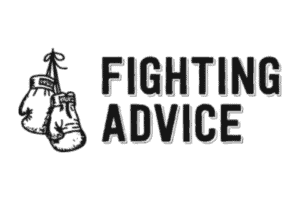It’s surprising how few scientific papers there are on children’s martial arts practice. One could imagine that this is an exhaustly researched subject. However, the recommendations rely basically on instructors’ opinions. Unfortunately, long-term effects on the body remain unstudied. But there are many pieces of research pointing to the benefits of this practice among youths.
So, at what age can a child start BJJ? Most gyms will set a limit between 5 and 8 years old. However, no research points to any detriment of martial arts practice specific for the youngest students. Instead, it is already proven that BJJ and other martial arts are of great benefit to children’s development.
Besides, BJJ may be effective in controlling aggressiveness, anger, anxiety, and many other behavioral disorders that might negatively affect kids. The limitations made by gyms are based more on the structure of their classes. And it has nothing to do with children’s limitations.
What Are The Challenges of Teaching The Youngest Students?
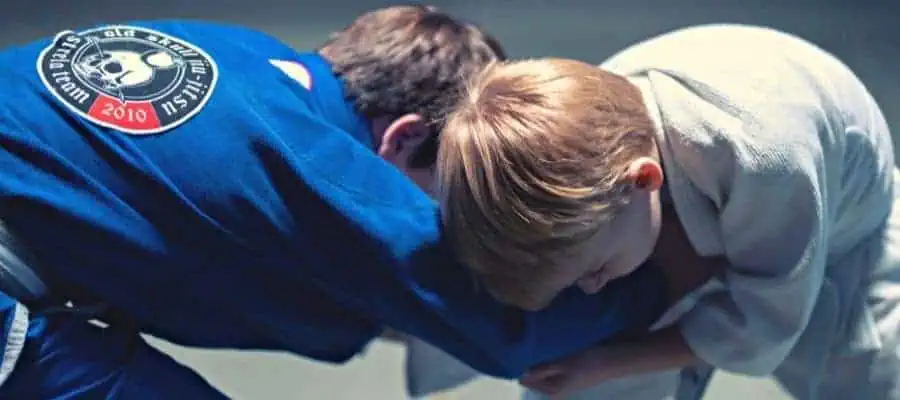
It’s challenging for an infant to pay attention for long in any class. This is why you will find some gyms and instructors labeling them as unteachable. But the truth is that there’s no such a thing as an “unteachable” person. What might be the case is that the teacher is not prepared for working with children. There’s nothing wrong with this though.
But when it comes to learning, we cannot say that a child can only start training from a given random age. But we must also consider the children’s desires and behaviors? How can an early start affect a child’s further achievements in sports and life? Let’s say your goal is to give your child the opportunity to become a great athlete.
Then the long-term training involvement is necessary. Some people think that starting BJJ too early is a bad idea. So, when a child has not yet developed a certain level of independence, it can cause an aversion to this sport. This is why many specialists recommend starting training at age of 6 or 7. But it’s not rare to find among great names those who started at an early age.
For example, Leo Santos (UFC fighter), Rodrigo Gracie (ADCC and Pride star), Sylvio Behring (a BJJ living legend), Patrick Gaudio, and the late Ryan Gracie, who fought for Pride and was the trainer of the world champion Fábio Leopoldo. All these fighters started BJJ at 4 years old. So now they would certainly thank their parents for their early beginning.
Because it gave them more time to develop themselves. Learning takes time and the sooner a fighter begins, the bigger are his chances to become a legend. But, even if you’re not thinking that far ahead, Jiu-Jitsu can also be an option for improving:
- Agility and flexibility
- Muscle development
- Coordination
- Balance
- Emotional intelligence
- Social skills
What about the physical and psychological aspects? There is no research of any kind that relates health issues to the practice of BJJ. It is easier to find some conclusions describing training as a treatment for many disorders. Of course, the class needs to be adapted for a child to consider it a fun activity, not a boring obligation.
But it’s still possible to submit a kid of any age to BJJ practice. It is possible with the right coaching skills. Also, the classes must be adapted to keep the attention of the little ones.
The Benefits Of BJJ To Children’s Development
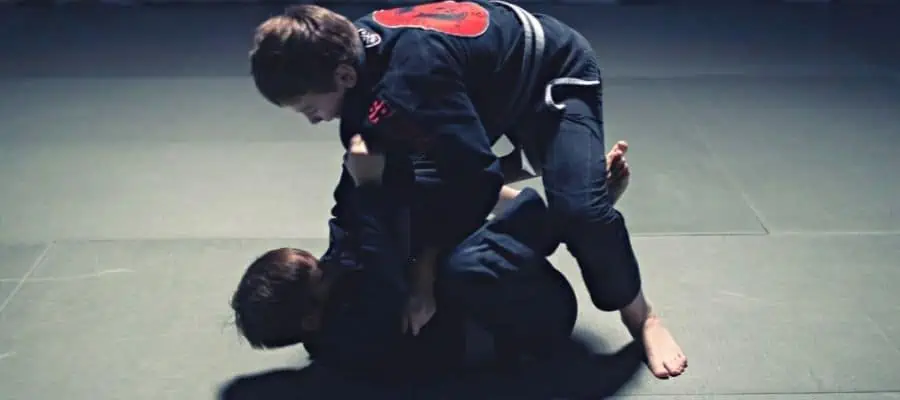
Martial arts, as a scientific subject, is very an underestimated theme. That’s why it’s rare to find much information about a specific kind, such as Jiu-Jitsu. But the truth is that many aspects are common to all types of martial arts. So the results are easily transferable from one to the other. Therefore, it will be good to know some general research results. Also, understand why choosing Brazilian Jiu-Jitsu for kids is a good idea.
Social Skills
We live in a globalized and increasingly connected world. Here social skills are essential to professional and personal success. It’s harder to develop these features as an adult than as a growing child. For this reason, it’s important to look for activities that can improve them from an early age.
Martial arts can be used to boost many social and psychological aspects in children. These aspects are autonomy, self-esteem, cognitive and affective self-regulation. At the same time, training can also reduce anxiety, aggressiveness, and anger.
Cognitive Functions
A twice-a-week MMA program has been shown to improve academic performance for children between 8 and 11 years old. Besides, it reduces maladaptive behaviors in school. These effects are not related only to the spending of energy on exercise, as one might think. Executive functions are essential skills to be successful. The following features are key for learning and strategy development:
- Mentally playing with ideas
- Giving a considered rather than an impulsive response
- Staying focused
Martial Arts, including BJJ, can help to improve these elements in children between 4 and 12 years old.
For anyone who has ever seen a BJJ fight, it’s clear that decision-making is a complex skill under pressure. If you can think straight and find a way out of a good rear-naked choke, there isn’t much in life that can trap you.
Disadvantages Of BJJ For The Children
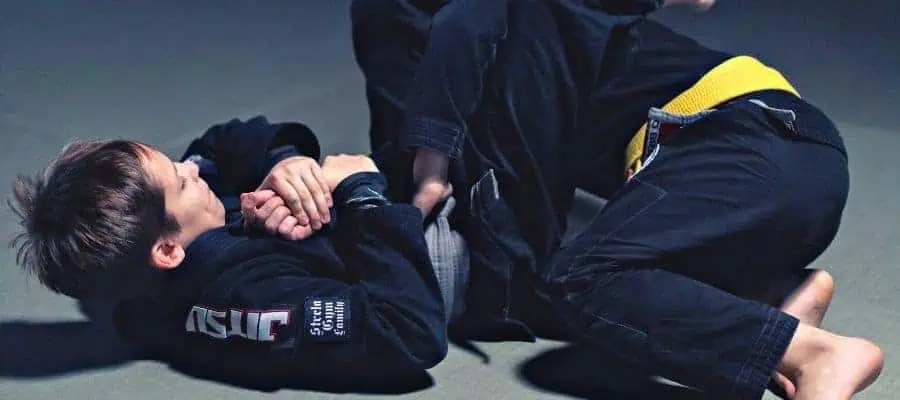
Martial Arts, like any contact sports, might cause injuries. Besides that, it also can create a false sense of security in children. The truth is that they are more susceptible to becoming drunk with power. Both these problems must be taken very seriously.
Injuries
Research with 1287 adult BJJ practitioners in 2019 did show that almost 60% of the athletes had at least one injury over 6 months. The injury incidence was negatively associated with years of training and body weight. This means that it’s more likely to get injured when you’re a beginner and not heavy. These results are hard to be translated into kids’ environments though.
It’s a known fact that a child’s body is frailer than an adult’s. Although it needs less pressure to get injured, it usually recovers faster and better. Any fighter will report decreasing in regeneration rate with age. Needing less time to recover, an injury might not affect as much a child’s life as compared an adult.
But parents need to take their kids to a doctor whenever an injury occurs.
It is because a badly-healed one might have more serious effects on children than on adults. The American Academy of Orthopaedic Surgeons alerts that children can injure growth plates. These are areas of developing cartilage at the ends of long bones. Here bone growth occurs in children. An injury to this region has the potential to disrupt the normal growth of bone.
What If Children Think They Are Invincible And Get Themselves Into Real-Life Problems?
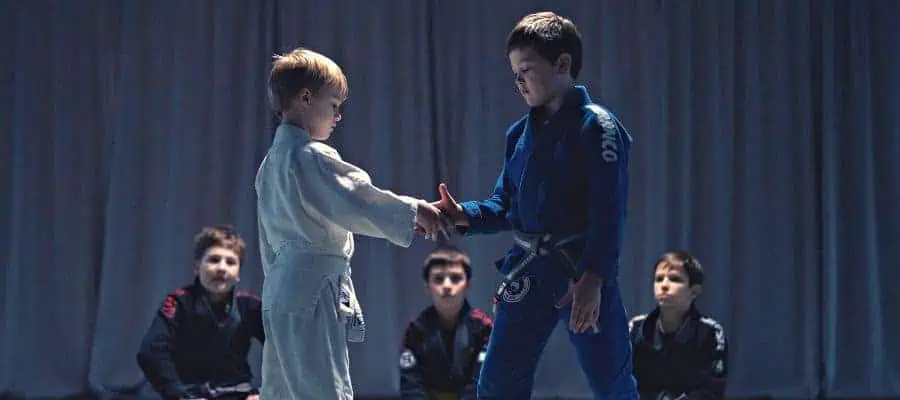
In 2015, Bruno Inácio Nunes, a BJJ instructor from Rio de Janeiro – Brazil, was killed in an attempt to disarm a robber on a bus. While the gunman was taking the passengers’ stuff, the black belt tried to take his gun. As a result, he was shot in the head, dying instantly at age 37.
BJJ is empowering in itself. Cinema doesn’t collaborate too – superheroes are always putting themselves in extreme danger. For this reason, kids must be taught consequences. And also, they need to be able to tell apart reality from fantasy. Still, this might not be enough. They need to be convinced not to use their techniques on the streets. Unless it is strictly necessary.
Necessity, however, is a very thin line for a child to see by himself. Teaching limits to kids is so easy. When you work with a grown athlete, you can talk about law and show them that. Sometimes, it’s better to take a physical hit than a criminal process. But, when it comes to children, these limits must normally be imposed as a rule to keep training.
Is Brazilian Jiu-Jitsu Worth The Risk?

That’s always a parent’s decision. But let’s face it: these risks are out there in many other activities and must be dealt with. To prevent these problems, it’s especially important for parents to follow every behavioral change and to talk to the kids about them. Also, they need to take extra care when it comes to physical damage.
Many people will argue that kids may also get more violent with BJJ. Also, many behavioral flaws are sometimes associated with this practice. But they are actually the result of poor management of the class by an incompetent or irresponsible coach. And very rarely it is still an individual case.
You still can hear a story or two about groups of bad boys going to some places looking for trouble after training. Besides, cases of home violence and street fights involving MMA or BJJ stars are not rare. But these are exceptions, misconducts by individuals, or bad teams. Truth be told, we can’t control everyone.
The thing is that, basically, all the evidence points in the other direction.
When it comes to injuries, BJJ has a feature there some people call “controlled aggression”. Compared to striking martial arts, it is easier for BJJ athletes to control the force and so the damage inflicted on the opponent. When you chose BJJ, you’re benefiting from the majority of pros of any other Martial Art. And also you prevent accidents and, so, injuries.
Can Competing In BJJ Affect A Child’s Behavior?
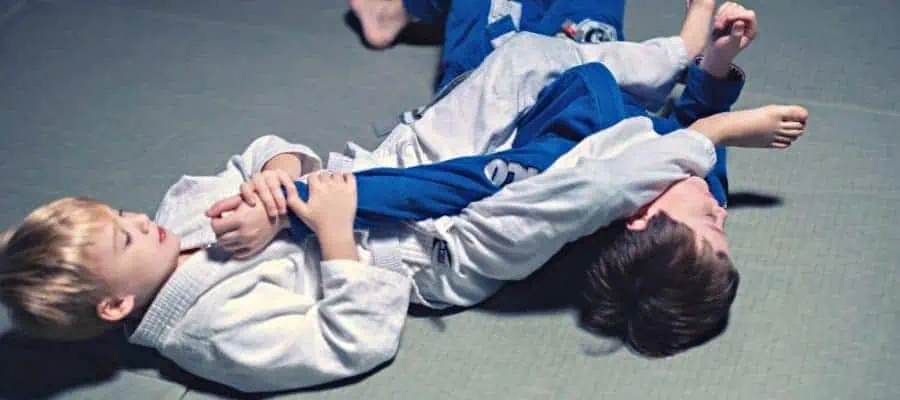
That’s a really hard question! In fact, this is a vastly studied subject and yet we have no definitive answer for that. Some people see competition as a good thing for children. It is because it prepares children for a competitive world. Others believe that competition is bad for society and people’s mental health. There is a threshold, not an easy one to point out, that must be considered.
INEOS, a chemical company, sponsored a debate between some prominent people on this subject. Alfie Kohn, author of “No Contest: the case against competition” said:
“There is no such thing as ‘healthy’ competition. In a competitive culture, a child is told that it isn’t enough to be good. He must triumph over others. But the more he competes, the more he needs to compete to feel good about himself. But winning doesn’t build character; it just lets a child gloat temporarily. By definition, not everyone can win a contest. If one child wins, another cannot. Competition leads children to envy winners, to dismiss losers”.
He also believes that cooperation is the key to success. David Deister, project manager at German Athletics Federation, thinks that:
“Sports competitions are bad for children if those taking part are expected to achieve more than they are capable of”.
But, he also believes that children are competitive by nature. As a solution, he proposes to change the goals of the competition. Children will be encouraged for taking part and awarded for that. This way, cooperation prevails over individuality. But this is not a unanimous position. John Tauer, basketball coach and professor of psychology at the University of St Thomas, Minnesota, said:
“Competition can be healthy when it provides feedback to kids about their performance and improvement when winning is not the sole or primary objective, and when kids get to learn about themselves under challenging situations. Under these circumstances, competition can teach invaluable lessons our children do not typically learn in the classroom”.
David Cameron, former UK prime minister, stated:
“We need to end the ‘all must have prizes’ culture and get children playing and enjoying competitive sports from a young age, linking them up with sports clubs so they can pursue their dreams. That’s why the new UK national curriculum now includes a requirement for primary schools to provide competitive sport”.
Besides, the few papers that present competition as a good thing also argue for “healthy competition”. None of the competition’s proponents have analyzed the social and psychological consequences of this kind of competition. It’s not our place to say that parents should or should not submit their children to competition. But, as it’s not an easy case, the safer thing to do is to proceed with caution.
Whenever you decide to let your kids be part of any competition, keep one eye on the whole process, including training. Look for signs of stress, frustration, and anger, and try to modulate their reactions.
Brazilian Jiu-Jitsu As Treatment For Kids

Some evidence shows that many martial arts, including BJJ, can be used as a treatment for a number of disorders. An experiment conducted by Phung and Goldberg in 2019 has shown that MMA training is effective to improve executive functions in children with an autism spectrum disorder. MMA training, like the one used as a method in this study, usually has a strong BJJ component.
Such activities can also reduce the impact of repeated childhood bullying trauma. Bullied kids may be as bad and long-lasting impacted as sexual or physical abuse. Activities such as BJJ may help children to deal with bullying and other kinds of abuse.
These problems can begin at a very early age and might pass through a whole life undetected. So, submitting kids to training is a way to prevent the worst trauma consequences.
Conclusion
BJJ and other martial arts can and should be used by parents and schools as tools for the education and development of children. It’s just a matter of being attentive and finding the best places to guarantee that. A place where your baby is properly guided and helped to develop as best as possible.
Recent Posts
What is Manachai's Fighting Style? Unveiling Muay Thai Mastery
Manachai, a celebrated figure in the Muay Thai world, has captivated audiences with his exemplary martial prowess. Hailing from the heartlands of Thailand, his name is synonymous with the art of...
What Was Chamuekpet Hapalang's Fighting Style? Unveiling Techniques
Chamuekpet Hapalang was a renowned figure in the world of Muay Thai (record 200-48-2), embodying a fusion of Muay Bouk and Muay Khao styles. Originating from Thailand, the art of Muay Thai is known...
